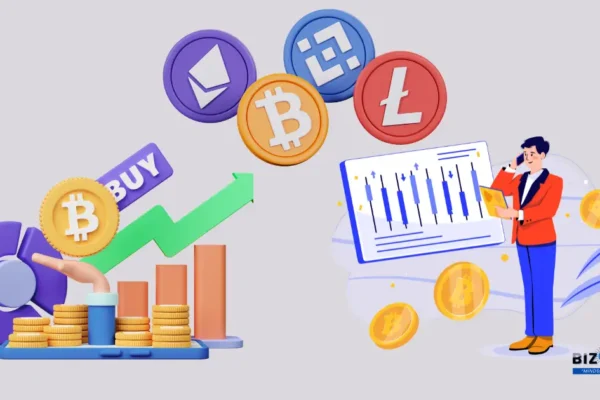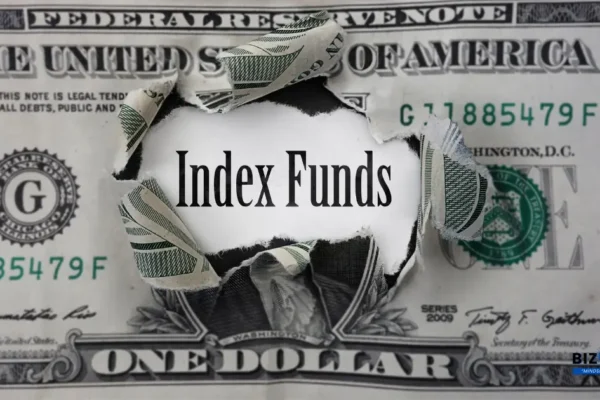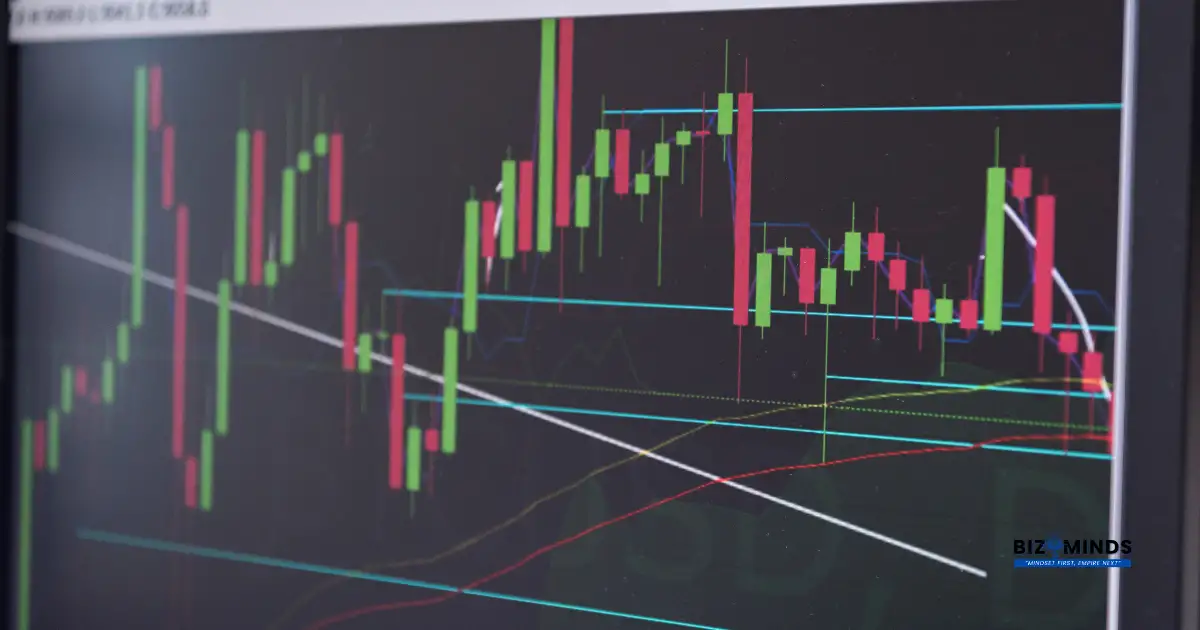

Best Forex Trading Platform USA: Your Complete Guide to Smart Currency Trading in 2025
The foreign exchange market represents the ultimate financial frontier for traders across the United States, pulsating with $7.5 trillion in daily global turnover that dwarfs all other financial markets combined. Think of it this way: in the time it takes to read this sentence, approximately $500 million worth of currencies have changed hands across the globe. Within this massive financial ecosystem, the United States commands the second-largest position globally, processing a staggering $1.196 trillion in daily transactions as of October 2024—a figure that exceeds the entire GDP of most nations.
Yet beneath these astronomical numbers lies a more personal story—one that resonates with millions of individuals across the country seeking financial independence through currency trading. From the software engineer in Austin monitoring EUR/USD during lunch breaks to the retired teacher in Phoenix hoping to supplement social security, the forex market has democratized access to what was once an exclusive institutional domain. The 24-hour trading window means opportunity never sleeps, spanning from the Sydney open at 5 PM EST through London’s peak volatility hours and into New York’s closing bell.
The retail forex landscape has witnessed remarkable transformation in recent years. After three years of decline, retail margin forex trader numbers surged by 11% in 2024, reaching 186,000 active participants. This resurgence stems from a powerful influx of 71,000 new and reactivated traders, driven by factors including learning new skills (45%), low capital entry requirements, and day trading aspirations. The sophistication of the average retail trader has dramatically improved over the last five years, fueled by enhanced educational resources and more intuitive forex trading platform.
However, the path to forex success is far from guaranteed. Recent statistics reveal a sobering reality: between 72% and 84.6% of retail forex traders lose money, with only about 4% achieving sustainable profitability. These numbers aren’t meant to discourage—rather, they underscore why choosing the right forex trading platform becomes the cornerstone of success in this dynamic environment. The difference between the 4% who succeed and the 96% who struggle often comes down to three critical factors: proper education, disciplined risk management, and—crucially—selecting a platform that supports rather than hinders their trading goals.
The psychology behind these numbers tells an even deeper story. Behavioral economics research shows that currency markets amplify human emotions like few other financial instruments. The fear of missing out drives novice traders toward overleveraged positions, while loss aversion causes them to hold losing trades too long. Meanwhile, herd behavior creates the very market movements that sophisticated traders capitalize on. Understanding these psychological patterns—and choosing platforms with educational resources to address them—can tip the odds significantly in favor of individual traders.
The demographics paint an intriguing picture: 91.5% of US forex traders are males, with only 8.5% being females. The predominant portion of employed forex traders are above age 40, yet the percentage of millennials and Gen Z individuals participating continues increasing, with social media serving as their primary source for forex trend information. This generational shift brings both technological sophistication and heightened risk-taking behaviors that platforms must accommodate.

Gender distribution of traders on the forex trading platform in the United States, showing the predominant male participation in currency trading
The regulatory environment provides crucial protection yet limits flexibility. The United States foreign exchange market, valued at $203.3 billion in 2024 and projected to reach $346.9 billion by 2033 with a 6.1% CAGR, operates under strict CFTC and NFA oversight. Only six registered dealers currently control the entire retail market, holding approximately $527 million in client funds as of February 2025. This concentration stems from stringent requirements, including a $20 million minimum capital requirement for forex dealers.
This comprehensive analysis cuts through the marketing noise to examine the top platforms serving US traders, dissecting their features, costs, and regulatory compliance with the precision of a forensic accountant. Whether pursuing supplemental income to pay off student loans, building a nest egg for early retirement, or developing skills for a full-time trading career, understanding platform nuances can literally mean the difference between achieving financial goals and joining the unfortunate majority who lose money.
The stakes have never been higher for retail traders in the United States. As traditional investment yields remain suppressed and inflation erodes purchasing power, more individuals are turning to active trading strategies. The retail participation surge during 2020-2021 saw the percentage of stock traders increase significantly, with many transitioning into forex markets seeking the enhanced liquidity and 24-hour access that currency trading provides. This influx brings both opportunity and heightened competition, making platform selection more crucial than ever.
What follows is not just another broker comparison—it’s a strategic blueprint for navigating what can often feel like an overwhelming landscape of choices. From tastyfx’s beginner-friendly approach to Interactive Brokers’ institutional-grade tools, from understanding CFTC regulations that protect capital to recognizing the hidden costs that erode profits, every detail examined here serves one purpose: helping traders make informed decisions that align with their financial objectives and risk tolerance.
The dream of financial independence through trading remains alive and achievable—but only for those who approach it with proper preparation, realistic expectations, and the right technological foundation. The choice of forex trading platform isn’t just about spreads and commissions; it’s about finding a partner in the journey toward trading success.
Understanding US Forex Trading Regulations
Navigating the regulatory landscape is a critical step in choosing a reliable forex trading platform. In the United States, the Commodity Futures Trading Commission (CFTC) acts as the chief enforcement agency, while the National Futures Association (NFA) oversees broker registration and conducts ongoing reviews. Together, these two bodies safeguard traders by enforcing rigorous standards designed to prevent fraud, misuse of client funds, and unfair market practices.
Any forex trading platform operating in the US must meet a series of stringent requirements before onboarding clients. First, every registered dealer must maintain a minimum capitalization of $20 million, ensuring that client funds remain fully segregated from the broker’s operational accounts. This capital cushion offers a critical safety net, protecting traders’ deposits even in times of severe market stress.
Leverage restrictions further illustrate the cautious approach US regulators take toward margin trading. Retail accounts are capped at 50:1 leverage on major currency pairs such as EUR/USD and USD/JPY, and 20:1 on minor or exotic pairs. These limits help curb the excessive risk-taking that can quickly erode a trader’s account when volatility spikes.
In addition, US rules enforce a strict First-In, First-Out (FIFO) order execution model, prohibiting the simultaneous hedging of positions in the same currency pair. This ensures transparent trade processing and prevents complex, offsetting order structures that can obscure underlying risk. Every registered forex trading platform must also adhere to mandatory reporting schedules and submit to regular financial audits, reinforcing accountability and operational integrity.
Before funding an account, traders should verify a broker’s credentials through the NFA BASIC database (nfa.futures.org/basicnet) and confirm CFTC registration at cftc.gov/check. Choosing a forex trading platform that complies with these regulations not only provides peace of mind but also builds the foundation for a secure and trustworthy trading experience
Top Forex Trading Platforms for US Traders
- tastyfx (formerly IG US): The All-Rounder
tastyfx earns its reputation as the go-to forex trading platform by combining tight pricing, an intuitive interface, and comprehensive education tools. With a minimum deposit of just $100, traders can access an average EUR/USD spread of 0.98 pips across more than 68 currency pairs. The platform suite includes the proprietary tastyfx application, MetaTrader 4, and TradingView integration, ensuring flexibility for every trading style. The dedicated Learn portal delivers live webinars, interactive tutorials, and an integrated economic calendar—features designed to counteract behavioral traps like overtrading and FOMO. - OANDA: The Spread Leader
For those prioritizing cost efficiency, OANDA stands out as the premier forex trading platform for low spreads. By sourcing prices directly from interbank markets and eliminating internal markups, OANDA maintains an average EUR/USD spread of 1.35 pips with zero minimum deposit. Traders can choose between MT4, the proprietary OANDA Trade platform, or TradingView, and may join the Elite Trader Program for rebates up to $17 per million traded. High-volume participants benefit further by switching to commission accounts, where EUR/USD spreads tighten to 0.4 pips under a $5 per $100K fee. - FOREX.com: Mobile-First Innovation
FOREX.com redefines mobile trading with its RAW account, which delivers zero-pip spreads on major pairs alongside a $7 per $100K commission. Its forex trading platform ecosystem spans a proprietary web interface, MT4, MT5, and TradingView, supporting over 80 currency pairs. The fully featured mobile app offers advanced charting tools, customizable trading alerts, and Pine Script compatibility—allowing traders to analyze markets and execute strategies seamlessly from any device. - Interactive Brokers: Institutional-Grade Tools
High-volume traders seeking professional-grade capabilities turn to Interactive Brokers. With no minimum deposit requirement and a $2.00 per lot commission, this forex trading platform provides direct market access through Trader Workstation and Level II pricing. Covering more than 85 currency pairs, it offers advanced order types and algorithmic execution features essential for sophisticated strategies. However, the platform’s complexity presents a steeper learning curve, making it best suited for experienced market participants. - Charles Schwab: Customer Support Leader
Charles Schwab leverages the combined strength of Schwab and TD Ameritrade to deliver unparalleled service. This forex trading platform features US-based 24/7 support, extensive branch access, and the powerful thinkorswim application with Apple Watch integration. Although average EUR/USD spreads sit at 1.4 pips, the robust support infrastructure—complete with dedicated account advisors—helps mitigate stress-related trading errors, particularly for those new to leveraged markets.
Platform Feature Comparison
The table below summarizes key specifications for the leading US forex trading platforms, helping you identify which broker aligns best with your trading style and budget requirements:
| Broker | Min Deposit | EUR/USD Spread | Commission (per $100K) | Platforms | Currency Pairs | Best For |
| tastyfx (formerly IG) | $100 | 0.98 pips | $0 | tastyfx, MT4, TradingView | 68+ | Beginners/Overall |
| OANDA | $0 | 1.35 pips | $0 | MT4, OANDA Trade, TradingView | 68 | Low spreads |
| FOREX.com (RAW) | $100 | 0.0 pips | $7 | Proprietary, MT4, MT5, TradingView | 80+ | Active traders |
| Interactive Brokers | $0 | Variable | $2.00 | Trader Workstation | 85+ | Professionals |
| Charles Schwab | $0 | 1.4 pips | $0 | thinkorswim | 90+ | Customer support |

Comparison of average EUR/USD spread costs across leading US forex trading platforms
When evaluating a forex trading platform, these specifications reveal critical cost structures and capabilities. tastyfx stands out for new traders seeking a balance of competitive spreads (0.98 pips) and comprehensive education, while OANDA’s zero minimum deposit removes barriers to entry despite slightly wider spreads. FOREX.com’s RAW account eliminates spreads entirely but charges a $7 commission, making it cost-effective for traders executing multiple daily positions.
Interactive Brokers offers the most currency pairs (85+) with institutional-grade tools, though its variable spreads and professional focus suit experienced participants. Meanwhile, Charles Schwab provides the broadest pair selection (90+) alongside unmatched customer service, justifying its 1.4-pip spread for traders who value human support over razor-thin costs.
Each forex trading platform caters to distinct trading profiles: beginners benefit from educational resources and simple interfaces, active traders prioritize low total costs per trade, and professionals require advanced order types and direct market access. Consider your experience level, trading frequency, and preferred level of support when making your selection.
MetaTrader 4 vs. MetaTrader 5: Choosing Your Ideal Forex Trading Platform
When evaluating a forex trading platform, many traders face the decision between MetaTrader 4 (MT4) and MetaTrader 5 (MT5). MT4 has earned its enduring popularity by delivering a streamlined, forex-focused experience: its user-friendly interface, nine customizable chart timeframes, and vast library of community-built Expert Advisors (EAs) make it the go-to choice for currency-only strategies. With one-click trade execution, straightforward order management, and lightweight resource requirements, MT4 simplifies analysis and order placement, allowing you to focus on market moves rather than wrestling with software complexity.
By contrast, MT5 represents the evolution of the MetaTrader family into a true multi-asset trading platform. With 21 chart timeframes and advanced order types—such as buy stops limits and sell stop limits—MT5 caters to those seeking deeper analytical flexibility and precision entry and exit controls. Its built-in Economic Calendar and enhanced backtesting environment support rigorous strategy optimization across forex, stocks, indices, and commodities. For traders whose ambitions extend beyond currency pairs, MT5 provides the infrastructure to develop more sophisticated automated systems, integrate custom indicators via MQL5, and manage diverse portfolios—all within a single forex trading platform designed for next-generation market demands.
Mobile Trading Essentials for a Forex Trading Platform
Today’s top forex trading platforms offer mobile apps that rival desktop software, empowering you to trade seamlessly from anywhere. Look for features such as real-time streaming quotes with ultra-low latency to capture fleeting market moves; advanced charting capabilities complete with a full suite of technical indicators; and one-click trade execution coupled with customizable order tickets for rapid entries and exits. Push alerts for price levels, economic releases, and news events ensure you never miss a critical market signal, while comprehensive in-app account management handles everything from deposits and withdrawals to performance analytics. Among US brokers, tastyfx sets the standard for mobile user experience, delivering a consistently synchronized interface across devices so your watchlist, chart layouts, and open positions follow you effortlessly from desktop to smartphone.
Cost Analysis: Spreads, Commissions, and Beyond
Evaluating a forex trading platform means looking beyond the quoted bid-ask spread to uncover all embedded costs. On commission-based accounts, spreads can narrow dramatically—often to 0.2–0.6 pips on major pairs—in exchange for fixed fees, making this model more cost-effective for high-frequency traders. Conversely, spread-only accounts bundle all charges into the spread itself, which typically ranges from 1.2 to 1.8 pips on EUR/USD.
Overnight financing, or swap fees, also factor into total expenses. Depending on interest rate differentials between currencies, these charges may range from –$0.50 to –$3.00 per standard lot each night, a detail that becomes significant for carry-trade strategies or swing positions that remain open beyond daily rollover.
Inactivity fees apply when trading stalls: most platforms levy $10–$15 monthly if an account sits idle longer than 90 days. This underscores the importance of selecting a forex trading platform that aligns with your expected trading frequency and offers transparent fee schedules.
Finally, currency conversion fees can add up for non-USD deposits or withdrawals, typically imposing a 0.25%–0.50% spread on converted amounts. For traders funding accounts in multiple currencies, these costs warrant careful comparison across prospective platforms.

Total cost comparison between standard spread-only accounts and commission-based accounts on forex trading platform for a $100,000 EUR/USD trade
Education, Risk Management, and Common Pitfalls
A robust educational offering often correlates directly with long-term profitability, making it a vital feature when choosing a forex trading platform. Seek comprehensive curricula covering market fundamentals—such as macroeconomic indicators and central bank policy analysis—alongside technical analysis workshops on chart patterns, oscillators, and trendlines. Position-sizing calculators and stop-loss strategy modules equip traders to cap single-trade risk at recommended levels (typically under 2% of account equity), while dedicated trading psychology sessions address emotional biases like overconfidence and loss aversion.
Despite education, many traders fall prey to familiar errors: overleveraging beyond recommended limits leads to rapid account drawdowns; trading without a plan invites impulsive entries; ignoring economic calendars results in unexpected volatility; and revenge trading after a loss cycle compounds mistakes. Platforms that integrate simulated demo environments with automated risk-management prompts help reinforce disciplined behavior and reduce the 72%–84.6% loss rate experienced by retail participants.
Security and Compliance
Selecting a regulated forex trading platform ensures that client funds enjoy legal protections and operational transparency. US-registered brokers must maintain a minimum capital base of $20 million and segregate client funds in dedicated accounts, shielding traders if the firm encounters financial distress. Regular financial audits and mandatory reporting to the Commodity Futures Trading Commission (CFTC) and the National Futures Association (NFA) further enforce accountability. Before committing capital, verify a broker’s credentials through the NFA BASIC database (nfa.futures.org/basicnet) and confirm active CFTC registration via cftc.gov/check. These due-diligence steps form the bedrock of a secure trading experience.
Getting Started: Step-by-Step Guide to Your Forex Trading Platform
- Account Setup:
Begin by choosing a CFTC-registered, NFA-member forex trading platform and complete the online application. You’ll need to upload a government-issued ID (driver’s license or passport), a proof-of-residence document (utility bill or bank statement), and Social Security number for tax compliance, and details about your employment and income to satisfy regulatory Know-Your-Customer requirements. - Funding Your Account:
Deposit funds using the method that best balances speed and cost. ACH bank transfers are free and typically post within 1–3 business days, while wire transfers clear same-day but incur $15–$25 fees. Debit card funding is instant, subject to daily limits set by your broker. Always verify minimum deposit requirements—some platforms allow accounts from $0, while others require $100 or more to access premium pricing. - Platform Installation and Configuration:
Download your chosen forex trading platform’s desktop or mobile application. Set up chart templates with preferred timeframes and technical indicators, configure price alerts on key currency pairs, and program automated stop-loss and take-profit levels. Familiarize yourself with the order ticket interface—customize default lot sizes and order types (market, limit, stop) to streamline trade entries. - Practice in a Demo Environment:
Launch a risk-free demo account, which mimics live market conditions without risking real capital. Use this environment to test trade setups, refine indicator parameters, and practice your risk-management rules—such as never risking more than 1–2% of your virtual balance on a single trade. - Executing Your First Live Trade:
When you’re ready to transition to live trading, start with small position sizes—no more than 0.5–1 standard lot for larger accounts or scaled-down lot sizes for smaller balances. Place a stop-loss order immediately to cap downside risk, and log every trade in a journal, noting entry and exit levels, rationale, and emotional state. Reviewing this performance data weekly will highlight strengths and areas for improvement, fostering a disciplined approach to using your forex trading platform.
Future Trends for Forex Trading Platforms
As technology continues to reshape financial markets, the next generation of forex trading platform will integrate advanced tools designed to enhance decision-making and accessibility. Artificial intelligence (AI) trading assistants are poised to become mainstream, leveraging machine learning algorithms to scan vast data sets for pattern recognition and generate real-time trade signals. These AI features can automate routine tasks—such as identifying trend reversals or adjusting stop-loss levels—allowing you to focus on strategy refinement rather than manual analysis.
Cryptocurrency integration will expand within leading platforms through strategic partner APIs, enabling seamless switching between fiat and digital asset markets without leaving the familiar interface. Expect features like multi-currency wallets, on-demand stablecoin conversions, and cross-asset correlation tools that help manage portfolio risk when trading forex alongside Bitcoin, Ethereum, and other tokens.
The rise of social and copy trading communities will further democratize access to professional strategies. Top forex trading platform will embed social feeds and performance leaderboards, allowing you to vet strategy providers based on verified track records and risk metrics before replicating their trades automatically. This collaborative model opens new avenues for learning while demanding robust risk controls—such as customizable copy ratios and maximum drawdown limits—to protect your capital.
Enhanced mobile-first architectures will deliver full-featured desktop capabilities to smartphones and tablets, including voice-activated trade commands and augmented reality chart overlays. Combined with cloud-based profile synchronization, these features ensure your watchlists, chart templates, and open orders remain perfectly aligned across all devices.
Finally, as regulatory landscapes evolve, expect forex trading platform to integrate built-in compliance tools—automated tax reporting modules and real-time trade surveillance alerts—to simplify adherence to changing rules. By adopting these future-ready innovations, you’ll position yourself to harness emerging opportunities and maintain a competitive edge in the fast-paced world of forex trading
Conclusion
Choosing a superior forex trading platform is the crucial first step on your journey to consistent market success. A well-designed platform not only offers competitive pricing and seamless execution but also delivers the educational resources, risk-management tools, and regulatory protections needed to transform ambition into achievement. Whether you value OANDA’s razor-thin spreads, tastyfx’s immersive learning environment, FOREX.com’s mobile innovation, Interactive Brokers’ institutional-grade depth, or Charles Schwab’s best-in-class support, aligning platform strengths with your personal trading style and goals will set the stage for sustainable performance.
Remember, the most effective forex trading platform acts as more than just software—it becomes a steadfast partner, guiding you through fast-moving markets, offering actionable insights, and helping you refine strategies. Combine this technological foundation with disciplined risk management, continuous skill development, and the resilience to learn from every trade. In doing so, you’ll harness the full potential of today’s dynamic currency markets and move confidently toward your financial objectives.
Frequently Asked Questions
- What minimum deposit is required?
Accounts open with $0–$100, though $500–$1,000 is recommended for sensible risk management. - Is forex trading legal and safe in the US?
Yes—when conducted through CFTC-registered, NFA-member brokers. Verify registration before funding. - MT4 vs MT5—what should I choose?
MT4 suits forex-only traders seeking simplicity; MT5 adds multi-asset capabilities and advanced tools for broader strategies. - Spread vs commission—how do costs compare?
Spread accounts charge wider spreads (1.2–1.8 pips on EUR/USD); commission accounts offer tighter spreads (0.2–0.6 pips) plus $5–$7 per $100K traded, benefiting active traders.
| Broker | Account_Type | EUR_USD_Spread | Commission_100K | Total_Cost_Example |
| tastyfx | Standard | 0.98 | 0 | 0.98 |
| OANDA | Standard | 1.35 | 0 | 1.35 |
| FOREX.com (Standard) | Standard | 1.4 | 0 | 1.4 |
| FOREX.com (RAW) | Commission | 0.0 | 7 | 7.0 |
| Interactive Brokers | Commission | Variable | 2 | 2.0 |
| Charles Schwab | Standard | 1.4 | 0 | 1.4 |
| Trading.com | Standard | N/A | 0 | N/A |
- What leverage limits apply?
Leverage capped at 50:1 on majors and 20:1 on minors; FIFO and no hedging rules apply to retail accounts. - Which mobile app offers the best UX?
tastyfx’s app synchronizes seamlessly with desktop, while FOREX.com provides advanced charting and custom alerts. - How to verify broker legitimacy?
Use the NFA BASIC database and CFTC’s Check Registration tool to confirm status and view disciplinary history. - What educational resources are key?
Seek brokers offering video tutorials, webinars, demo accounts, and trading psychology modules—tastyfx and OANDA lead in breadth and quality. - Common trader mistakes to avoid?
Overleveraging, lack of a trading plan, ignoring economic news, revenge trading, and using unregulated brokers account for most losses. - How do overnight swap charges work?
Positions held past 5 PM ET incur swap rates based on interest differentials, ranging from -$0.50 to -$3.00 per lot daily. - What customer support levels should I expect?
Top brokers provide 24/7 US-based phone, live chat, and physical branch access; aim for sub-minute live chat response and 24-hour email turnaround. - Can I trade crypto on forex platforms?
Some brokers offer crypto through partners but under separate regulatory frameworks; treat crypto as a distinct asset class with its own risks.





